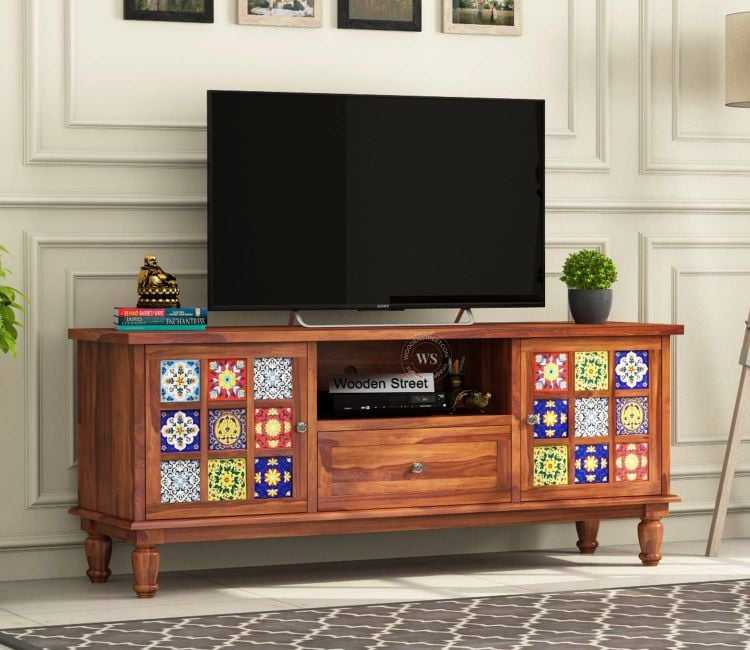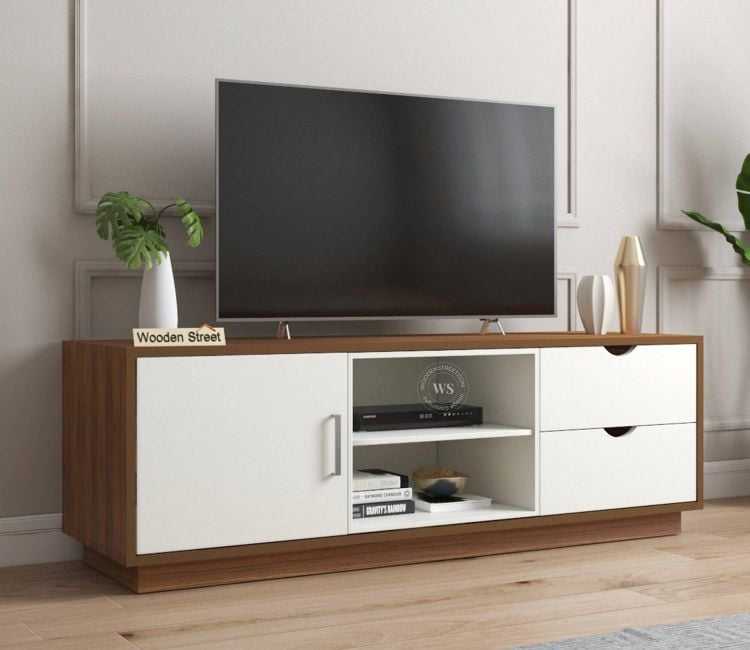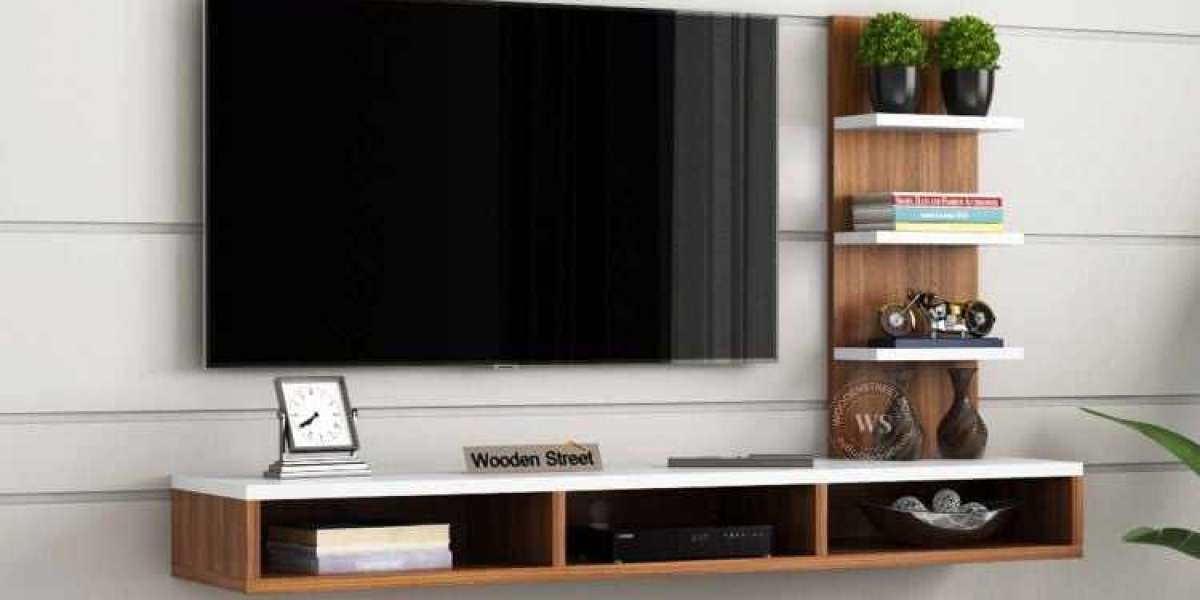When it comes to enhancing your living space with a sleek and stylish TV panel, the material you choose plays a crucial role in both aesthetics and durability. A well-designed TV panel is not just a functional element to mount your television—it also sets the tone for your room’s décor, acts as a visual focal point, and often provides additional storage or display features.
Among the most popular materials used for TV panel are wood, MDF (Medium-Density Fiberboard), and metal. Each material brings its own unique look, feel, and benefits. But which one is right for your home? Let’s break down the pros and cons of each to help you make the best decision for your space and lifestyle.

1. Wood: The Timeless Classic
Nothing beats the warmth and richness of a solid wooden TV panel. Known for its durability and natural appeal, wood adds a sense of luxury and permanence to any room. Whether you prefer traditional, rustic, or contemporary designs, wood can be crafted to match a variety of interior styles.
Advantages of Wooden TV Panels:
Natural Aesthetic: Wood offers timeless beauty and organic texture, making it a perfect centerpiece.
Strength Durability: High-quality hardwoods like teak, oak, or sheesham are extremely durable and long-lasting.
Customizable: Can be stained or painted to suit different color palettes and styles.
Eco-Friendly Options: Reclaimed wood panels support sustainable living.
Drawbacks:
Higher Cost: Solid wood can be expensive compared to alternatives.
Weight: Heavier than MDF or metal, requiring strong wall support.
Maintenance: Susceptible to moisture damage if not sealed properly.
A wood TV panel is ideal for homeowners who value craftsmanship and want a rich, warm look that complements traditional or earthy interiors.
2. MDF (Medium-Density Fiberboard): Budget-Friendly Versatility
If you're looking for a cost-effective and stylish TV panel, MDF is a top contender. This engineered wood product is made by compressing wood fibers with resin under heat and pressure. It’s smooth, uniform, and easily finished with veneers or laminates.
Advantages of MDF TV Panels:
Affordability: MDF is generally much cheaper than solid wood, making it budget-friendly.
Smooth Surface: Ideal for high-gloss finishes, laminates, and paint.
Design Flexibility: Easier to cut and mold, allowing intricate designs and modern panel styles.
Lightweight: Easier to handle and install, especially in compact spaces.
Drawbacks:
Not as Durable as Wood: Can be prone to chipping or swelling if exposed to moisture.
Shorter Lifespan: Typically doesn’t last as long as solid wood, especially under heavy use.
Limited Weight Capacity: May not support very heavy televisions without reinforcement.
MDF TV panels are perfect for contemporary homes or renters who want trendy designs without a high investment. They offer visual appeal with flexibility in finishes and colors.
3. Metal: Sleek, Industrial Modern
For homeowners who love minimalist, industrial, or futuristic aesthetics, a metal TV panel is a standout choice. Metal panels, made from aluminum, steel, or other alloys, are gaining popularity for their sleek appearance and superior durability.
Advantages of Metal TV Panels:
Modern Look: Clean lines and metallic finishes give a bold, high-tech vibe.
Strength: Metal is incredibly durable and can easily support large TVs and accessories.
Low Maintenance: Resistant to pests, mold, and moisture—making it ideal for humid areas.
Fire Heat Resistant: Great for homes that prioritize safety and longevity.
Drawbacks:
Cold Aesthetic: Can feel stark or sterile if not paired with warmer elements.
Higher Cost for Custom Designs: Complex metalwork or finishes may come with a premium price.
Weight Installation: May require professional installation due to its weight and sharp edges.
A metal TV panel works well in lofts, ultra-modern apartments, and tech-centric homes where a clean, bold design statement is desired.

4. Comparing the Three: Which is Best for You?
Choosing the right material for your TV panel ultimately comes down to personal preferences, lifestyle, and the design of your space. Here’s a quick comparison to help you decide:
| Feature | Wood | MDF | Metal |
|---|---|---|---|
| Aesthetic Appeal | Warm, classic, premium | Smooth, modern, versatile | Sleek, bold, contemporary |
| Durability | High (if maintained) | Moderate | Very High |
| Cost | High | Low to moderate | Moderate to high |
| Maintenance | Medium | Low | Low |
| Weight | Heavy | Lightweight | Heavy |
| Customizability | High | Very high | Moderate |
If you're designing a cozy living room with a warm, natural vibe, go with a wooden TV panel. For a modern apartment on a budget, an MDF TV panel can offer great value and style. And if your heart is set on minimalism or industrial design, a metal TV panel will make the perfect high-impact addition.
5. Tips for Making the Right Choice
Still unsure which TV panel material is right for your home? Keep these tips in mind:
Think Long-Term: Choose a material that aligns with your future plans. Solid wood may cost more, but it’s built to last.
Match Your Décor: Ensure the panel complements your flooring, wall color, and furniture.
Assess Humidity: If you live in a humid climate, opt for metal or sealed wood over MDF.
Weight Wall Strength: Heavier materials like wood or metal require solid wall anchors.
Budget Smartly: Balance your love for aesthetics with practical financial decisions.
Conclusion: Your Perfect TV Panel Awaits
The right TV panel can transform your entertainment area from a simple wall fixture to a design statement. Whether you gravitate toward the rich elegance of wood, the affordability of MDF, or the edgy allure of metal, each material has its strengths and limitations. By understanding these and aligning them with your personal style, needs, and budget, you’ll be one step closer to crafting a beautiful and functional living space.
No matter which material you choose, let your TV panel reflect not just your love for entertainment but your unique sense of style.







